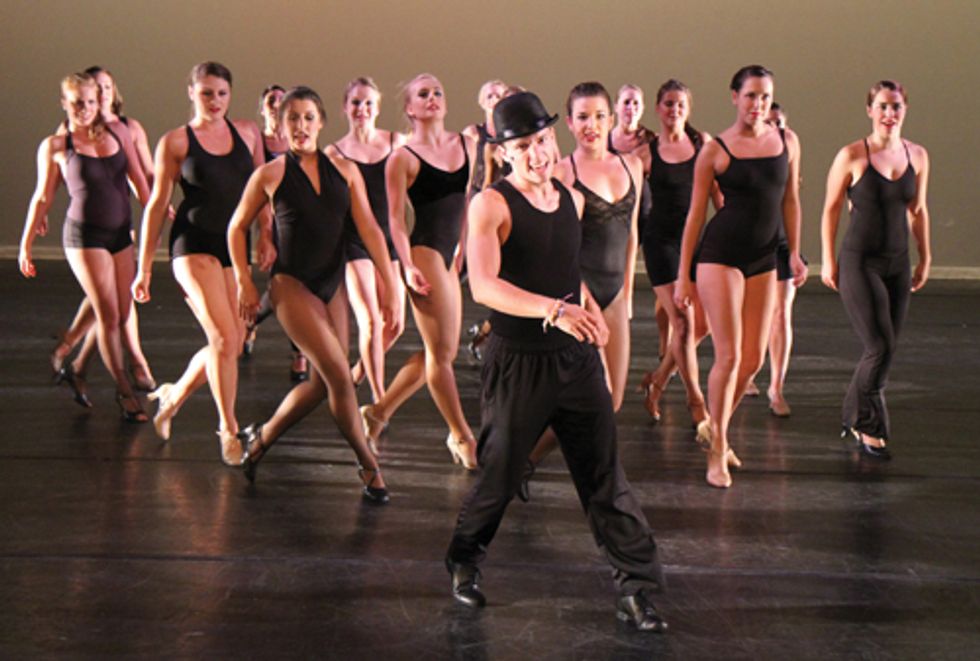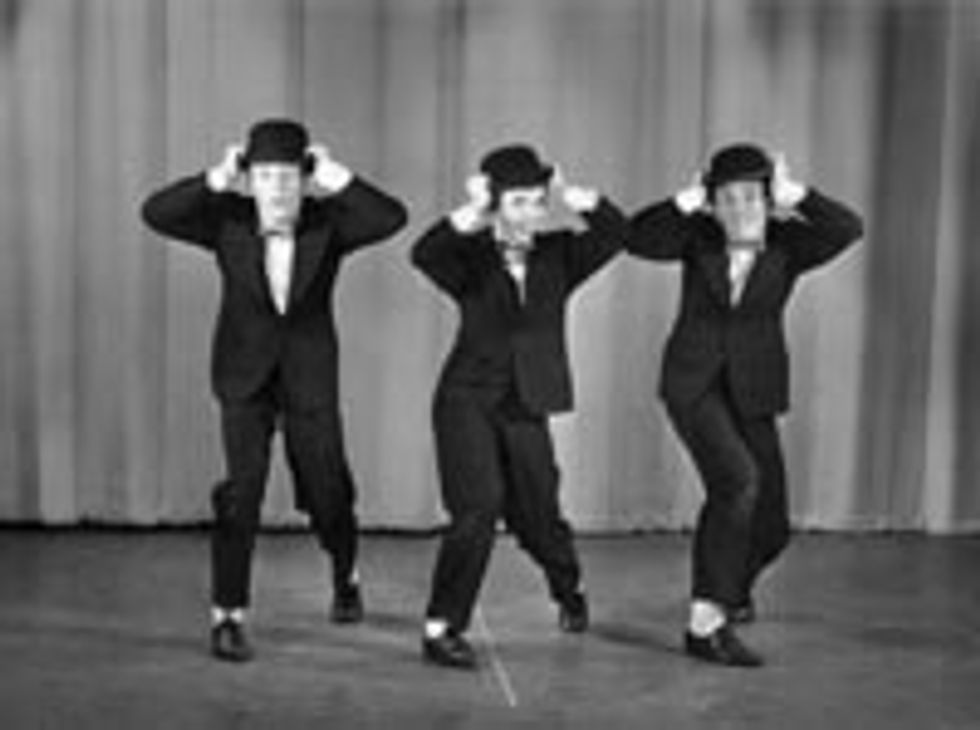It's About That Walk

Dancers from the 2011 Musical Theatre Performance Project jazz-walk it out. (Vanessa Pomiechowski/Courtesy Broadway Dance Center)
You’re in the studio, hard at work on a snazzy new jazz routine. As the choreographer adds the finishing touches to a phrase, she mentions that you’ll take eight jazz walks to travel to your next formation. You inwardly groan. A tricky pirouette combination? No problem. Jazz walks across the stage? Borderline torture. At best, you feel silly taking those long steps in a deep plié, and at worst, downright awkward.
If you struggle to strut, you’re not alone. Many dancers feel hesitant about jazz walks, but the sooner you master them, the better. You’ll find jazz walks in virtually every style of jazz dance, from contemporary pieces to sassy Broadway production numbers and everything in between. A clean, confident jazz walk ensures you’ll look as polished and poised during transitions in the choreography as you do when you’re leaping and turning.
The Basics
If you know how to stroll down the street, you’re halfway to mastering a jazz walk. Nick Lazzarini, Season 1 winner of “So You Think You Can Dance” and a faculty member at JUMP, tells dancers to relax when it comes to perfecting jazz walks. “So many kids stress out about them,” Lazzarini says. “You have to remember that you’re really just walking.”
Unlike a walk down the street, however, you need to have all your weight on the balls of your feet, while keeping your knees in a deep plié. The more you practice that catlike stance, the more comfortable it becomes. According to Sarah Jo Fazio, master choreographer and jazz instructor for Dance Olympus/DANCEAMERICA conventions, a warm-up with lots of relevé exercises will help you master walking in a small forced arch. “It will strengthen your legs and make the position feel less awkward,” she says.
When you’re practicing jazz walks, take long, even steps on the beat of the music. “The longer the stride, the smoother it looks,” says Lazzarini, who tells dancers to imagine that they’re gliding like ice skaters as they walk (though you should avoid dragging your feet). Whether you’re moving sideways, forward or backward, long steps—and a deep demi-plié—will help your jazz walks appear easy and seamless.

Practicing jazz walks in a master class at Broadway Dance Center (Reese Snow/Courtesy BDC)
Upper Body
Once you’ve mastered the lower body, it’s time to think about your arms and posture. “Your arms should be loose and relaxed,” Lazzarini says. “The more natural you are, the better it will look.” Just be sure loose arms don’t translate to a loose core. Engage your back and abdominal muscles to prevent slumping. Great posture makes you look more confident and polished. If your choreographer or teacher gives distinct port de bras for the jazz walk, Fazio and Lazzarini both recommend practicing the legs and arms separately before putting them together.
A Grand Entrance
Frequently, jazz walks are the way you get onstage during a routine. Fazio, a judge at competitions nationwide, says one of the biggest mistakes dancers make, especially in group dances, is walking off the beat or out of synchronization with the rest of the group. Even jazz walks that are technically strong will look sloppy when the group isn’t together. “It’s very messy to see different walks all over the stage,” Fazio says. “To look clean and precise, you need to be together.” For entrances and exits without music, try assigning one person the task of counting off for the rest of the group before you begin jazz walking. This will help your group remain synchronized at all times.
Make it Your Own
Because jazz walks are so adaptable, they can be the perfect place to add your own flair. If the choreography allows, try incorporating shoulder rolls or subtle hip movements to accent your walk. “Practice in front of a mirror to get confident,” Lazzarini says, especially if you find it difficult to incorporate all of those extras off the top of your head. Fazio likes to encourage beginners to add their own fun arms to jazz walks as soon as they master the basics. “It tends to relax them and make the lower body movement less stilted,” she says. Use your new signature walk to stand out at an audition or bring your own style to an improvisation section in a piece.


